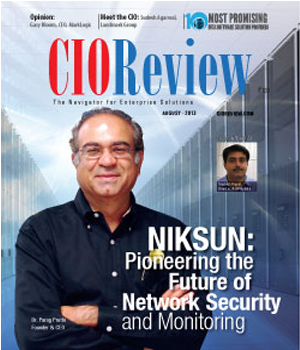
3 Trends That Will Continue To Impact The Future Of Digital Payments
Radhakrishna Venketeshwaran, VP – Head of Strategic Development Centre, Product & Engineering, Blackhawk Network India | Thursday, 07 January 2021, 08:35 IST

The financial services industry has witnessed a massive shift driven by digital transformation. This has opened up a plethora of opportunities around this domain. Payment business services have been at the forefront of digital innovation, which can be attributed to the existence of a robust infrastructure, budding customer expectations, progressive government initiatives and technological advancements. We are witnessing a conducive collaborative environment and vitality that is propelling digital adoption. A recent report from National Payments Corporation of India (NPCI) revealed that digital payments have rebounded in the month of May, with transaction volumes in UPI, FASTag and Bharat Bill Pay exceeding March levels.
India is at the helm of a “Payments Transformation”. The convergence of mobile technology and financial services, especially during these unprecedented times, has paved the way for increased transactions. While consumers have numerous payment methods at their disposal, there isn’t a single value-based ecosystem that effectively connects cash, digital and loyalty rewards today. Herein lies a crucial opportunity for companies to drive engagement, higher customer satisfaction and elevated experiences.
Here are the top technology trends that are driving the future of digital payments:
• Artificial Intelligence (AI) to accelerate digital payments - Companies have seen some major changes in the past owing to technological advancements. Covid-19 has undoubtedly catalyzed digital transformation, thereby resulting in exciting opportunities and challenges that could be addressed through AI. AI has been available in varied forms; however, it is only now that companies are starting to realize its true potential. In the near future, we will witness AI contributing in the following two aspects:
“The convergence of mobile technology and financial services, especially during these unprecedented times, has paved the way for increased transactions”
• Payments powered by computer-vision - While facial recognition technology has been around for a while now, it is still seen as the future of digital payments, especially for pioneers. By using machine-vision AI, credit and debit card data can be stored with facial ID that can eventually help with quick transactions. While it is still in its nascent stage, it is set to disrupt payment systems.
• Voice-activated payments - Integration of biometric secured payments with most smartphones is already a norm now. However, the next level would be integrating AI-powered smart assistants with voice-recognition technologies. With voice-activated payments, smart assistants can access accounts for transactions. In the future, it will not depend on assistants or other biometric securities for verification. A frictionless payment leads the way in digital transformation of financial services. Hence, in the coming future, we will witness these being replaced by most of the methods that are still being used today.
• Data race and security go hand in hand - Payment data is growing at a fast pace, creating more competitive opportunities across sectors. According to IDC, by 2025, there will be 41.6 billion connected devices worldwide, some of which will automatically generate payments . This will create an explosion of entry points into a business and generate a humongous amount of data. As the personal and professional worlds collide on the same devices, and even sometimes use the same identity credentials to authenticate and authorize, organizations need to establish policies and educate employees on the personal and organizational risks they face. To win in this data race, individuals need to protect themselves and their organizations from data misuse. Going forward, we will witness companies evaluating security in accordance with analytics to meaningfully leverage the benefits of data accumulation, while identifying real-time risks to trigger more immediate actions that will protect organizations from financial setbacks.
• Tokenization will play critical role to thwart online frauds - Tokenization primarily helps in protecting both businesses and customers from concerns such as data theft, data breach, cyberfraud, etc. Even if hackers somehow manage to plant a malware in the system and steal tokenized data, they will not be able to use the stolen tokens to pay online. The reason being – it is necessary to link the token to the payment information stored securely by the payment partner. We should remember that network tokens will always work – even if the information is stolen, the token can still be utilized to make payments, thereby ensuring that consumers can enjoy a seamless transaction without any disruptions.
Tokenization has brought about a new standard for emerging payment technologies to improve on. Going forward, businesses will consider developing payment tokenization systems to ensure that they safeguard critical information, while also navigating towards the future effectively.
Conclusion: As consumer expectations for flexibility and simplicity continue to soar, innovation for more unified payment experiences will likely be the next frontier in payment solutions. Depending on the feasibility, consumers are using different forms of emerging payments like apps that load cash digitally and enabling loyalty points to be used in lieu of currency. We look forward to seeing who recognizes the demand for these innovations, ensuring security and blazing the path in 2020 and beyond.
CIO Viewpoint
Indian INCs Look at Investment in Security Big...
By Ron Davidson, CTO and Vice President, R&D, Skybox Security
IT Strategy Needs Frequent Updates
By Sankaranarayanan Raghavan, Director-IT, AEGON Religare Life Insurance
Innovation & Governance through Business Alliances
By Larissa Tosch, CIO, Glatfelter Insurance Group
CXO Insights
Revolutionizing BFSI: The Impact of AI and ML...
By Mike Yesudas, CTO, SunTec Business Solutions
Bridging the Gap: No-Code Platforms and...
By Mr. Muzammil Patel, Global Head Strategy and Corporate Finance at Acies
The Impact of Custom Software on the Indian...



.jpg)



